HCK is a Potential Prognostic Biomarker that Correlates with Immune Cell Infiltration in Acute Myeloid Leukemia
- PMID: 35280440
- PMCID: PMC8916870
- DOI: 10.1155/2022/3199589
HCK is a Potential Prognostic Biomarker that Correlates with Immune Cell Infiltration in Acute Myeloid Leukemia
Abstract
Background: The tumor microenvironment (TME) plays a significant role in the progression and prognosis of acute myeloid leukemia (AML). This study is aimed at exploring TME-associated biomarkers and identify their potential mechanism in the microenvironment of AML.
Method: In this study, the stromal, immune, and ESTIMATE scores of AML patients were evaluated with the ESTIMATE and CIBERSORT algorithms; then, the AML samples were divided into high- and low-score groups. We evaluated the association between clinicopathological characteristics, survival rate, and the stromal/immune/ESTIMATE scores. Furthermore, we identified TME-associated differentially expressed genes (DEGs) then carried out pathway enrichment analysis, protein-protein interaction (PPI) network, Cox regression analysis, and Kaplan-Meier survival analysis to select the most crucial genes. In addition, we further explored the potential mechanism of HCK in the AML microenvironment.
Results: We identified 624 TME-associated DEGs and found that HCK was the most promising biomarker associated with AML. The results of the gene set enrichment analysis (GSEA) indicated that HCK was mainly involved in immune and inflammation-related signaling pathways. In addition, CIBERSORT analysis showed that HCK was closely related to tumor immune infiltration, with HCK expression associated with various infiltrating immune cells, including B cells, T cells, tumor-associated macrophages (TAM), NK cells, plasma cells, eosinophils, and neutrophils. Furthermore, HCK expression was closely related with ELN risk stratification in patients with AML.
Conclusion: HCK could regulate immune cell infiltration in the microenvironment of AML and may act as a potential biomarker for the treatment and prognosis of AML patients.
Copyright © 2022 Fang Cheng et al.
Conflict of interest statement
The authors report no relevant conflict of interest.
Figures

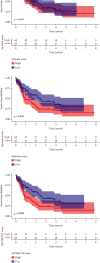
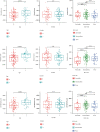
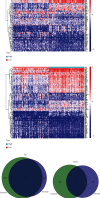
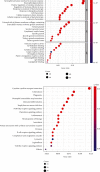
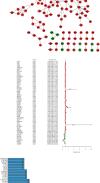
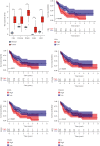
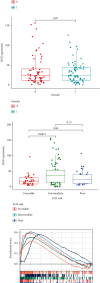



Similar articles
-
Construction of a stromal-related prognostic model in acute myeloid leukemia by comprehensive bioinformatics analysis.Curr Res Transl Med. 2025 Apr-Jun;73(2):103492. doi: 10.1016/j.retram.2025.103492. Epub 2025 Jan 5. Curr Res Transl Med. 2025. PMID: 39818173
-
High expression of COMMD7 is an adverse prognostic factor in acute myeloid leukemia.Aging (Albany NY). 2021 Apr 23;13(8):11988-12006. doi: 10.18632/aging.202901. Epub 2021 Apr 23. Aging (Albany NY). 2021. PMID: 33891561 Free PMC article.
-
Identification and validation of BATF as a prognostic biomarker and regulator of immune cell infiltration in acute myeloid leukemia.Front Immunol. 2025 Jan 13;15:1429855. doi: 10.3389/fimmu.2024.1429855. eCollection 2024. Front Immunol. 2025. PMID: 39872530 Free PMC article.
-
Identify potential prognostic indicators and tumor-infiltrating immune cells in pancreatic adenocarcinoma.Biosci Rep. 2022 Feb 25;42(2):BSR20212523. doi: 10.1042/BSR20212523. Biosci Rep. 2022. PMID: 35083488 Free PMC article. Review.
-
Immune control in acute myeloid leukemia.Exp Hematol. 2024 Oct;138:104256. doi: 10.1016/j.exphem.2024.104256. Epub 2024 Jun 12. Exp Hematol. 2024. PMID: 38876254 Review.
Cited by
-
CD86 Is Associated with Immune Infiltration and Immunotherapy Signatures in AML and Promotes Its Progression.J Oncol. 2023 Apr 7;2023:9988405. doi: 10.1155/2023/9988405. eCollection 2023. J Oncol. 2023. PMID: 37064861 Free PMC article.
-
Bioinformatic analysis and preliminary validation of potential therapeutic targets for COVID-19 infection in asthma patients.Cell Commun Signal. 2022 Dec 27;20(1):201. doi: 10.1186/s12964-022-01010-2. Cell Commun Signal. 2022. PMID: 36575422 Free PMC article.
-
A novel natural killer cell-related signatures to predict prognosis and chemotherapy response of pancreatic cancer patients.Front Genet. 2023 Mar 23;14:1100020. doi: 10.3389/fgene.2023.1100020. eCollection 2023. Front Genet. 2023. PMID: 37035749 Free PMC article.
-
Identification of key signaling pathways and hub genes related to immune infiltration in Kawasaki disease with resistance to intravenous immunoglobulin based on weighted gene co-expression network analysis.Front Mol Biosci. 2023 May 30;10:1182512. doi: 10.3389/fmolb.2023.1182512. eCollection 2023. Front Mol Biosci. 2023. PMID: 37325483 Free PMC article.
-
A panel of seven immune-related genes can serve as a good predictive biomarker for cervical squamous cell carcinoma.Front Genet. 2022 Nov 2;13:1024508. doi: 10.3389/fgene.2022.1024508. eCollection 2022. Front Genet. 2022. PMID: 36406134 Free PMC article.
References
MeSH terms
Substances
LinkOut - more resources
Full Text Sources
Medical
Molecular Biology Databases

